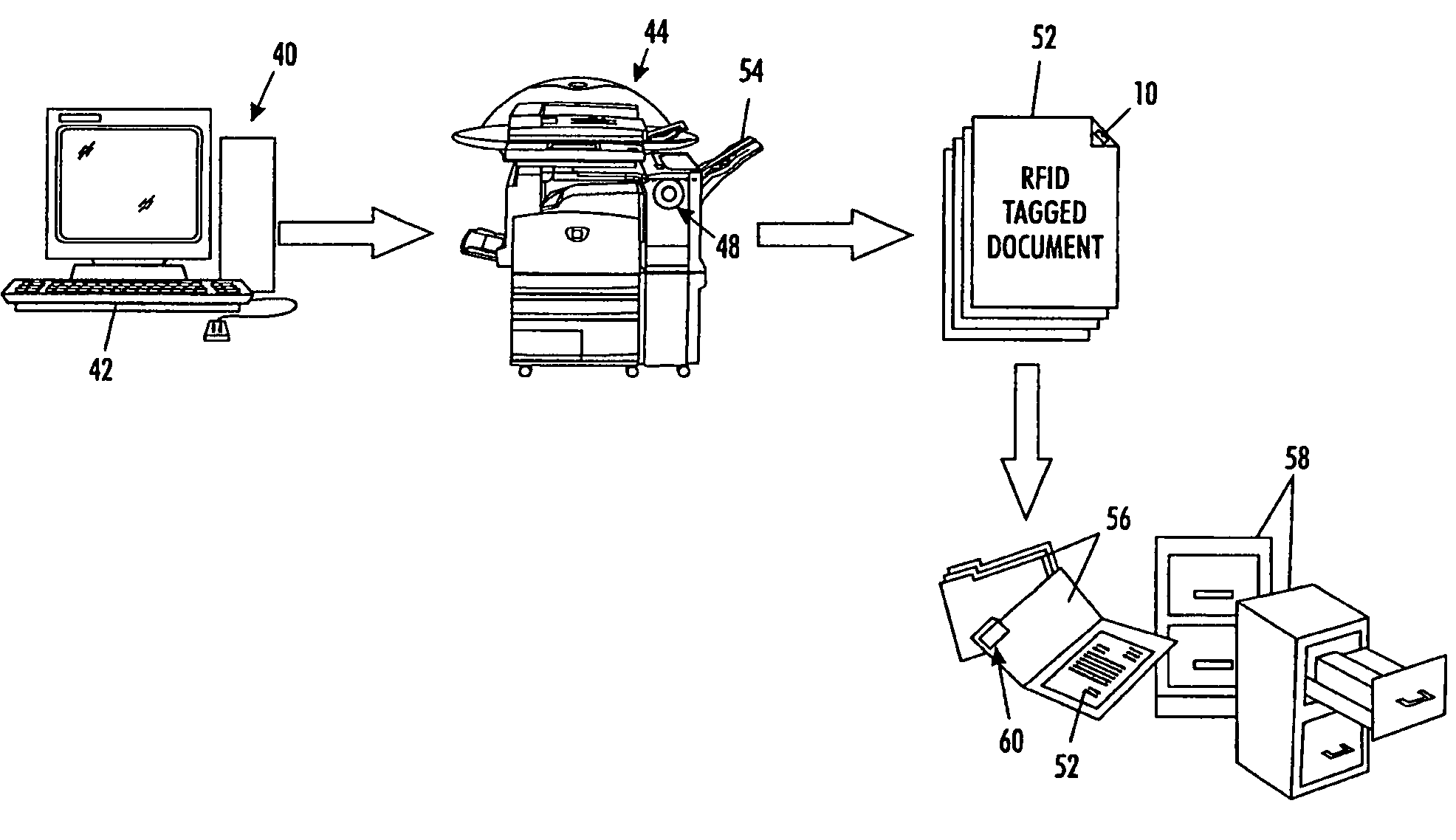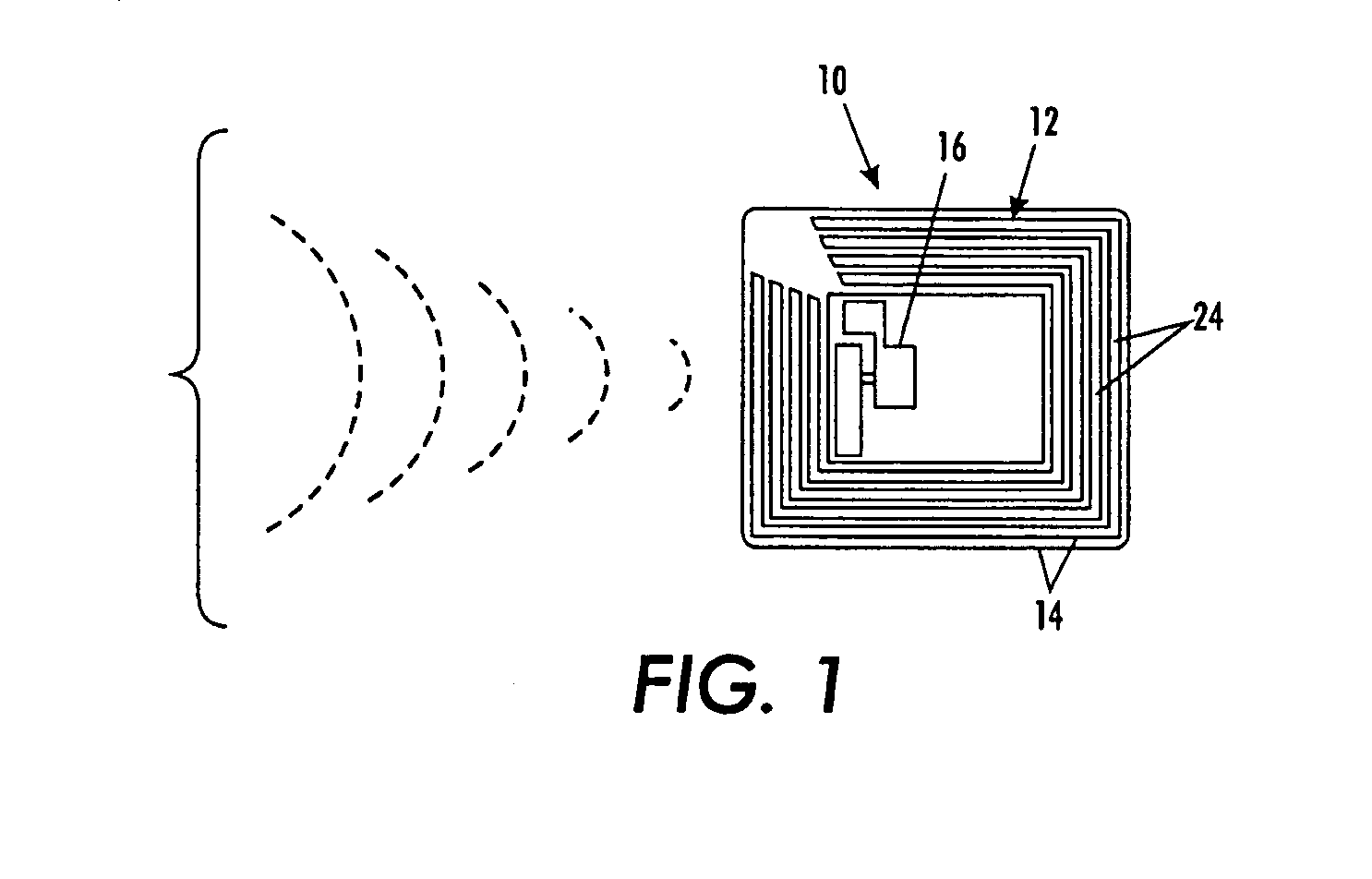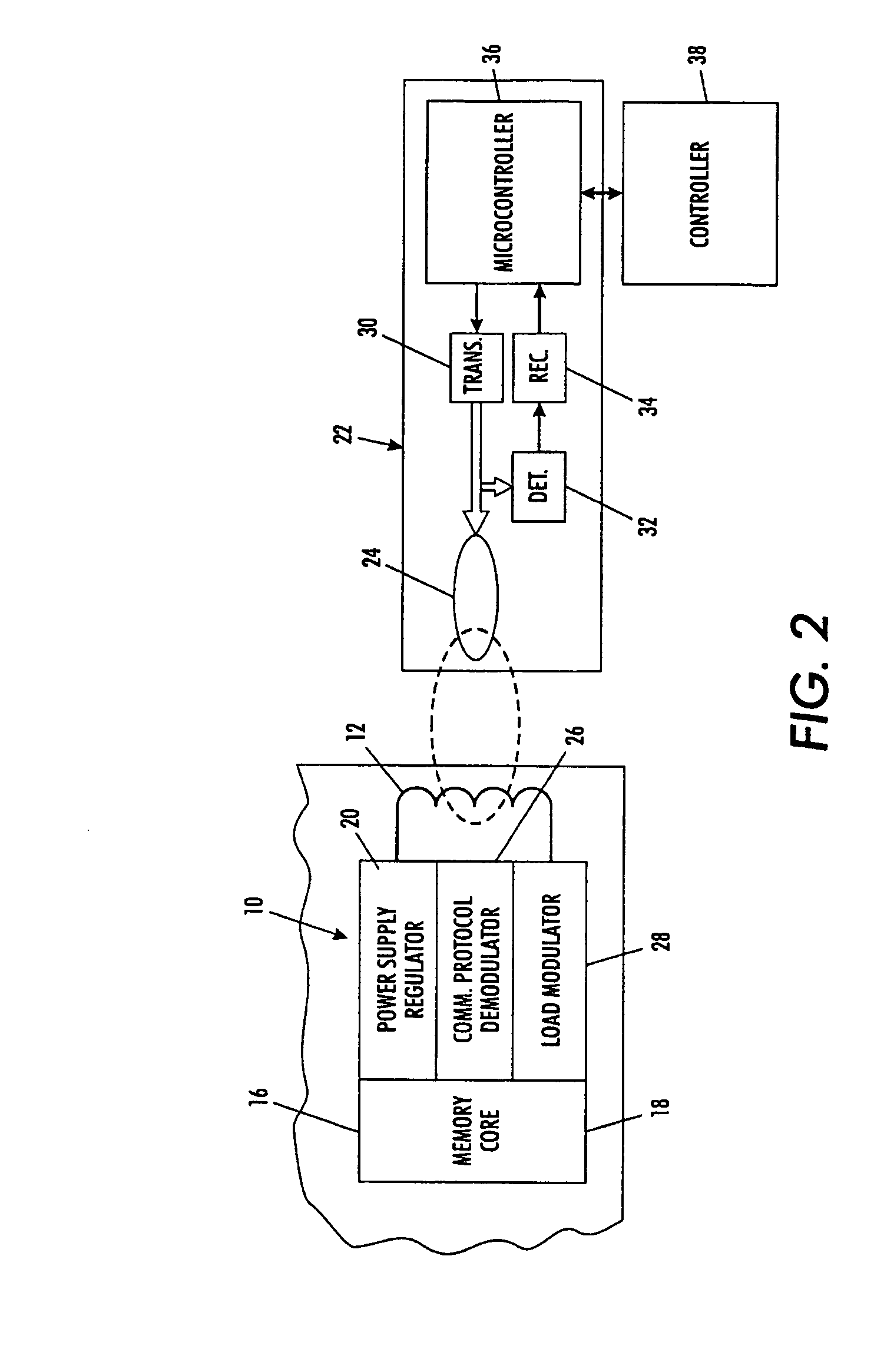Automatic indexing of printed documents
a printing document and automatic technology, applied in the direction of digital output to print units, program control, instruments, etc., can solve the problems of frequent search, time-consuming and expensive retrieval of misplaced or lost files, and loss for all practical purposes
- Summary
- Abstract
- Description
- Claims
- Application Information
AI Technical Summary
Benefits of technology
Problems solved by technology
Method used
Image
Examples
Embodiment Construction
[0019]Referring to FIGS. 1 and 2 of the drawings, there is shown a typical RFID tag 10 for use in a system for automatically indexing printed documents. The tag 10 includes a tag antenna 12 composed of a plurality of antenna elements 14 which, in this particular embodiment, are wound in a substantially rectangular pattern and connected to an integrated circuit chip 16, also known as a radio frequency identification chip. Within the tag 10, data storage and processing as well as radio frequency (RF) communication functions are performed by the RF identification chip 16.
[0020]As shown in FIG. 2, the chip 16 is a passive type and may include, for example, a memory core 18 (e.g. an EEPROM or flash memory), which stores the data, a power supply regulator 20, which rectifies and otherwise conditions alternating current induced in the antenna 12 by a time-varying RF signal provided by a reader or coupler 22 and its antenna 24 for use in the tag 10 as a direct current power source, and rece...
PUM
 Login to View More
Login to View More Abstract
Description
Claims
Application Information
 Login to View More
Login to View More - R&D
- Intellectual Property
- Life Sciences
- Materials
- Tech Scout
- Unparalleled Data Quality
- Higher Quality Content
- 60% Fewer Hallucinations
Browse by: Latest US Patents, China's latest patents, Technical Efficacy Thesaurus, Application Domain, Technology Topic, Popular Technical Reports.
© 2025 PatSnap. All rights reserved.Legal|Privacy policy|Modern Slavery Act Transparency Statement|Sitemap|About US| Contact US: help@patsnap.com



